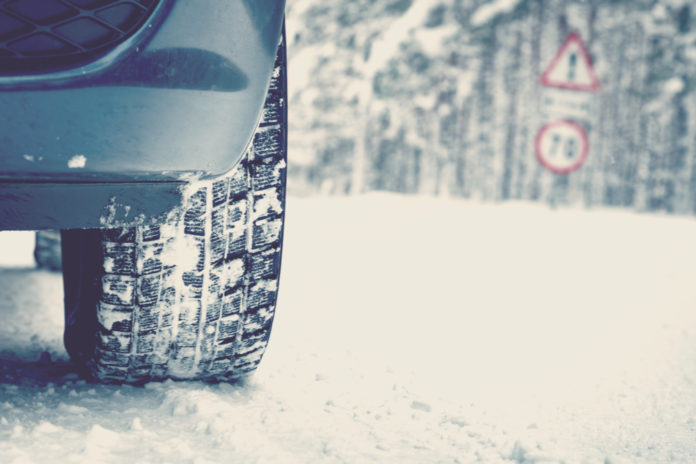Winter brings a slew of health and safety hazards, even though it also contains many of the year’s fondest celebrations. The best safety tips are those that encourage thinking ahead to account for possible dangers and disasters.
Read on for the best winter tips for a safe and healthy season!
6 Winter Safety Tips
Having a safe winter season starts with planning ahead and being prepared to face whatever storms may come with cold weather and freezing temperatures.
Winter safety tips, such as the ones right below, can help enhance the enjoyment of the winter season.
1. Watch for Warnings
Understanding and preparing for winter advisory notices is an important part of staying safe in the winter. The following warnings are common notices that may be sent out in the case of severe winter weather.
Winter Weather Advisory
These advisories are issued when snow, freezing rain, or sleet accumulates to the point of inconvenience and life-threatening hazard levels.
Frost or Freeze Warnings
Frost or freeze warnings are issued when below-freezing temperatures are expected. Residents of the area affected are expected to respond appropriately to the warning and react accordingly (i.e. prevent pipes from freezing or plan for an extra source of heat).
Road crews will likely spread salt on the roads in advance of a frost or freeze in an effort to prevent slick and slippery driving conditions.
Winter Storms
A winter storm watch means there is a possibility of a blizzard, heavy snow or rain, or heavy sleet. A winter storm warning indicates that there is already a storm occurring and action should be taken for protection, such as finding shelter if traveling when the warning is issued.
Blizzard Warning
Blizzard warnings are the most severe winter weather alert, and it is advised that residents of the area find shelter immediately. Strong winds of up to 35 miles an hour or more are expected and visibility nears zero.
The following may also occur and contribute to unsafe conditions:
- Blowing or falling snow
- Deep snow drifts
- Life-threatening wind chill
2. Travel Safely
Winter weather can make traveling difficult, but not always impossible. Winterize your car and take your time to help prevent injury and ensure utmost safety.
Take Caution & Your Time
During winter, it is extra important to travel with an added measure of caution. Consider leaving extra time for a commute or travel in case slippery or snowy winter roads cause unplanned delays.
Travel a safe distance behind trucks spreading substances to control winter weather, such as salt or sand. These trucks often change direction and do not always have the best visibility.
Tires & Batteries
The best options for winter weather are all-weather tires or snow tires, which are equipped to better handle typical winter driving conditions.
Tires should have a good amount of remaining tread life. It is also important to ensure that the car battery is relatively new and that it is fully charged.
Antifreeze
Antifreeze is used to help cool engines in extreme weather conditions. It works by regulating the temperature and essentially keeps the engine parts from freezing in cold weather. It helps to protect the car systems from the effects of ice forming, which can damage or interfere with the car. Have antifreeze checked before winter weather conditions set in.
Wipers
Wiper blades are crucial to good visibility and should be inspected each year before winter. They are not very costly to replace, so when in doubt install new wipers before braving the winter weather for safe measure.
Also top off wiper fluid to the appropriate level, and use a fluid that will be resistant to freezing.
Be Aware of Surroundings
Walk in areas that are plowed or treated and steer clear of roads and be careful in parking lots, especially the areas between parked cars where ice patches tend to linger. Also keep in mind while walking crosswalks that driver visibility may be low, including those manning snow plows.
The safest plan is to assume a driver cannot see and wait until it is safe to cross the street. Make eye contact with approaching drivers to confirm that they can see you. It may be wise to take a shuttle bus or other public transportation if available in the winter months.
Scrapers
Always have a sturdy ice scraper available, and consider one with attachments (such as a broom) that can help to clear all the snow on a vehicle from the windows, hood, roof, and rear view mirrors.
3. Preparing the Home
Preparing the home appropriately for winter helps ensure warmth while mitigating fire risk.
Power Outages & Generators
If expected to experience power loss during a storm, be sure to have a backup heat source, such as:
- Firewood
- Portable space heaters
- Extra blankets and/or warm winter clothes
- Sleeping bags
- Hand warmers
- Wool socks
Understand that phone lines and other means of communication may be affected, so it is also a good idea to have spare batteries, radios, and other possible means of communication available. Generators should be at least 20 feet from windows, doors, and vents. They should also be placed in a space unlikely to be reached by rain, snow, or sleet.
Using Appliances
Install a carbon monoxide detector and change its batteries at the suggested intervals in order to keep yourself protected. Fumes can be deadly when generators, gas or charcoal grills, camp stoves, or other devices are used incorrectly around or inside the home. Keep these devices clear of basements, garages, and windows.
Appliances should be plugged in to the generator only using heavy duty or outdoor-rated extension cords, and they should not be wet. Keep in mind that gasoline should not be stored indoors since fumes could ignite with the slightest spark of fire.
Heat the Home Safely
Conserving heat is important, however many heaters require proper ventilation. Be careful and follow label instructions for safe use. Use these tips regarding the following devices:
- Stoves: should not be used for the purpose of heat
- Fireplaces: do not not burn paper
- Space heaters, portable space heaters, and other combustion heaters: Must be properly vented to the outside and do not leak gas or exhaust indoors. Do not cover, and be sure to place at least 3 feet away from drapes, furniture or bedding.
- Fuel: use only the type the heater is designed to use and do not substitute
- Kerosene heaters: ensure proper ventilation
- Heat sources: keep at least 3 feet from drapes, furniture or bedding
Make sure that children are not left unattended near heaters, especially space heaters, and be sure that cords do not cause tripping hazards. Never run cords under carpets or rugs and replace damaged equipment and cords.
Prioritize Plans
Planning for winter may seem overwhelming. In an effort to keep it simple, start with the most important tasks first such as purchasing a first aid kit or setting aside items to assemble one.
Then, move on to other tasks, taking care of items in order of urgency if a disaster was to strike soon. This will help keep tasks in the order of appropriate priority and ensure that everything gets done.
4. Emergency Preparedness
Even when taking proper preparedness steps, emergencies can and do arise. Ease the danger by preparing for an emergency.
Devices
In the middle of a disaster is not a convenient time to find that the batteries of the flashlight were never replaced. Set aside or replace batteries for flashlights, radios, and cell phones, as well as any other assistive devices that may be a lifeline during an emergency.
If possible, avoid using candles to lower the risk of a fire hazard. Opt for battery-powered flashlights and lanterns instead.
Emergency Kits
Keep emergency kits in locations such as the car and house. Look to the lists below for ideal items to pack it with:
Car
- Ice scraper
- Snow brush
- Jumper cables
- Road salt/sand
- Blankets and warm winter clothes
- Shovel
- Tire chains
- Emergency equipment
- Emergency flares
- Emergency medication
- First aid kit
- Extra water
- Non-perishable snacks (i.e. crackers, granola bars, etc.)
- Kitty litter (easily provides traction under spinning tires)
Home
- Bottled water
- No-cook food
- Necessary medications
- First aid kit
5. Decorate Safely for the Holidays
Holiday trees may intend to bring cheer, but they can also be a holiday hazard if not set up carefully.
Steer Clear of Stairways, Exits & Common Paths
Walkways, stairways, and other highly trafficked areas are not ideal for decorations. Keep decorating limited to areas off to the side or replace regular centerpieces with seasonal decor. This way, the decor does not become a hazard or cause any unnecessary interruptions to the holiday fun.
Fire Safety & Fire Retardant Decor
Reported by the National Fire Protection Association (NFPA), more than 200 fires in the home each year start with Christmas trees. The National Institute of Standards and Technology, part of the U.S. Department of Commerce, enlisted fire researchers to demonstrate how a fire can spread with a watered Christmas tree and a dry Christmas tree.
According to the National Institute of Standards and Technology (NIST), Christmas trees should be watered and artificial flame-retardant trees may be the safer bet. Keep the label indicating the tree is flame retardant attached so that all users will know and can enjoy the peace of mind that safe decorating can bring.
Artificial trees that are flame retardant are also a good idea for areas not protected by sprinkler systems. It’s also good to use flame-retardant or non-combustible decorations. Don’t hang decor on sprinkler heads or pipes either.
Lights & Electricity
Unplug lights when they are not being used. Use power strips when possible and avoid extension cords. Don’t run cords under carpets or other materials and equipment, especially if flammable. Cords that are covered can also pose a tripping hazard and cause falls.
6. Take Care of the Body
Playing in the snow can be fun, but the fun can fade if one becomes victim to hypothermia or frostbite. Staying out in the cold for extended periods of time can cause cold-related problems and put health in jeopardy, so learn how to avoid, spot, and treat these conditions.
Also, keep other vulnerable populations in mind and check on loved ones.
Bundle Up
Wearing multiple layers of clothing can help to keep the body warm. Consider keeping these items in a winter collection of clothes:
- Gloves or mittens (mittens tend to be warmer)
- Scarf or knit mask/mouth covering
- Hat, one that covers the ears
- Suitable footwear (non-skid, not footwear with hard leather soles)
- Snug sleeves at the wrist
- Water resistant or waterproof coat and boots
Try to stay warm and dry to avoid getting chilled. Sweating can also cause the body to lose heat, so remove clothing if conditions become too warm. Clothing should consist of at least three layers:
- The inner layer should be composed of fabrics designed to hold body heat and resist moisture, such as wool or silk which will hold more body heat than cotton clothing.
- The middle/insulation layer should contain clothing with natural fibers (wool, goose down, or fleece) that traps air close to the body to retain heat.
- The outer layer is the one that adds protection from the elements, such as wind, rain, and snow. This layer should be tightly woven and water resistant to reduce the loss of body heat.
Watch for Signs and Symptoms
The National Weather Service has many resources for navigating winter weather. Be sure to know the signs and symptoms of succumbing to extreme weather, such as confusion, excessive shivering, stiff muscles, and difficulty speaking.
Do not ignore shivers since they are an important first sign that the body is losing heat. Constant shivering is a clear indication that it’s probably time to head inside.
Keep Vulnerable Populations In Mind
Younger and older adults both are more likely to maintain adequate body heat. Check on babies, children, and elderly friends and family to make sure their homes are heated properly or that they are kept warm under the proper conditions.
Eat & Drink Responsibly
Having well-balanced meals actually keeps the body capable of staying warmer. Alcohol and caffeine cause the body to lose heat at a faster rate as opposed to fluids like broth.
Those with dietary restrictions can refer to their healthcare team or dietitian for ideas of what might be best to eat to stay healthy in winter weather.
References:
NIH holiday decorating guidance. Nih.gov. https://www.ors.od.nih.gov/News/Pages/NIH-Holiday-Decorating-Guidance.aspx.
NIH Bethesda campus winter safety advisory. Nih.gov. https://www.ors.od.nih.gov/Pages/NIH-Bethesda-Campus-Winter-Safety-Advisory.aspx.
Winter weather tips: Understanding alerts and staying safe this season. Cancer.gov. Published February 18, 2015. https://ncifrederick.cancer.gov/about/theposter/content/winter-weather-tips-understanding-alerts-and-staying-safe-season.
Inclement Weather Information. Nih.gov. Published October 27, 2015. https://www.nih.gov/about-nih/inclement-weather-information.








